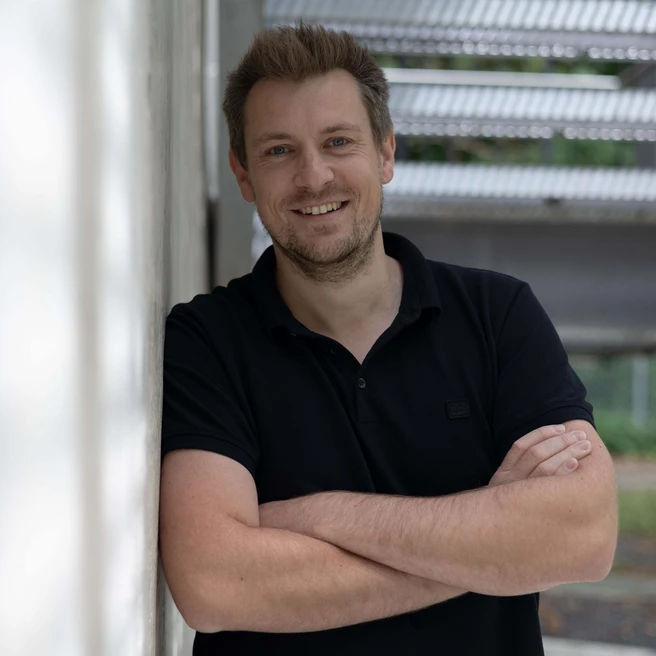As of October 1, 2025, Prof. Dr. Moritz Schumann accepted the appointment to the Technical University of Munich and has since headed the Chair of Experimental Exercise Science. His academic career began at the University of Jyväskylä in Finland, where he earned his PhD in 2016. In 2022, he completed his habilitation at the German Sport University Cologne and received the venia legendi in “(Clinical) Exercise Physiology.” From October 2022, he represented the W3 Professorship for Exercise and Movement Science at the University of Potsdam. Between 2023 and 2025, Prof. Schumann served as Professor of Sports Medicine and Exercise Therapy at Chemnitz University of Technology.
Prof. Schumann, welcome to the Department Health and Sport Sciences. What does the appointment to TUM mean to you?
“It is a great honor for me to work at one of the leading universities in Germany, Europe, and the world. What excites me most is that the sport and health sciences now hold a strong position. At TUM, I am particularly inspired by the interdisciplinary approach and the opportunity to collaborate closely with various disciplines. This greatly facilitates our research and opens up entirely new perspectives.”
In that context: What role does interdisciplinary collaboration play in your work?
“A very large one. I see exercise science as a kind of link between different disciplines. We develop training concepts and conduct interventional studies with various populations – for example, in elite sports as well as in medical contexts. In the latter, we work with patients in oncology or with diabetes, among others. Our goal is always to improve physical performance – whether for top athletes or clinical populations, for whom exercise can be vital.
Technology plays an increasingly important role in this. For instance, we use wearable sensors and devices to more precisely measure training loads and better understand adaptation processes. The environment at TUM is ideal for this – both within the Department of Health and Sport Sciences and beyond. For us, it’s an El Dorado of opportunities.”
What does the new designation “Experimental Exercise Science” mean exactly?
“At its core, it’s about systematically improving physical performance – regardless of one’s starting point. In elite sports, the goal is to optimize peak performance, whereas in health-oriented exercise it’s often about maintaining physical function. We develop evidence-based strategies and concepts that we test empirically. Technology helps us make training measurable and transparent. We collect data, assess the effectiveness of interventions, and thereby validate new measurement methods.”
Under your predecessor, Prof. Lames, exercise science was closely linked to sport informatics. How do you see sport informatics under your leadership?
“That’s actually a very sensitive topic, as there are different views on it. Personally, I take a broader perspective. We talk about training – meaning biological adaptation processes – and not just about sport in the narrow sense, such as elite competition. Sport informatics continues to play an important role, particularly in data analysis, algorithms, and artificial intelligence. We aim to quantify loads, analyze training data, and derive insights from them. However, the core expertise of our professorship clearly lies in physiology and training concepts, as well as in illustrating the interrelations of different systems within the context of performance.”
Which current research projects are you working on?
“Our main focus is on interventional studies. We are currently bringing three major EU-funded projects to Munich. These projects primarily aim to further develop sensor technologies for future use in training practice. A central aspect is so-called data fusion – the integration of different biological parameters to obtain a comprehensive picture of physical status. One of our goals is to better predict recovery processes after exertion.
Two of these projects focus on elite and health-oriented sports. Another initiative, carried out in collaboration with clinical partners, targets children and young adults with mental impairments. This project involves biomarker research – investigating measurable biological indicators such as hormones, proteins, or activity patterns that provide insights into health, development, or responses to training – as well as developing movement strategies that promote participation. It’s a fascinating example of how broad and application-oriented exercise science has become.”
How does this approach influence your teaching?
“It’s important to me to teach exercise science holistically. Rather than forcing it into rigid categories, we aim to think of it in terms of physiology and adaptation. The key question is: Which biological changes do I want to achieve with a given training – physically or mentally? And how can I control these processes? Technology also plays a central role in teaching. Students should learn to critically interpret training data, apply technological tools sensibly, and recognize the limits of such systems.”
How do you personally find balance outside of work? Do you do sports yourself, and if so, which ones?
“At the moment, it’s mainly about staying fit. I enjoy skiing and road cycling, though mostly as a hobby, and I do strength training about twice a week. For me, sports are both a balance to my work and a way of living the practice we research.”
To the Chair of Experimental Exercise Science
Contact:
Prof. Dr. Moritz Schumann
Chair of Experimental Exercise Science
TUM Campus at the Olympic Park
Am Olympiacampus 11
80809 Munich
Tel: +49 (89) 289 - 24504
Email: moritz.schumann(at)tum.de
Text: Bastian Daneyko
Photo: Private
